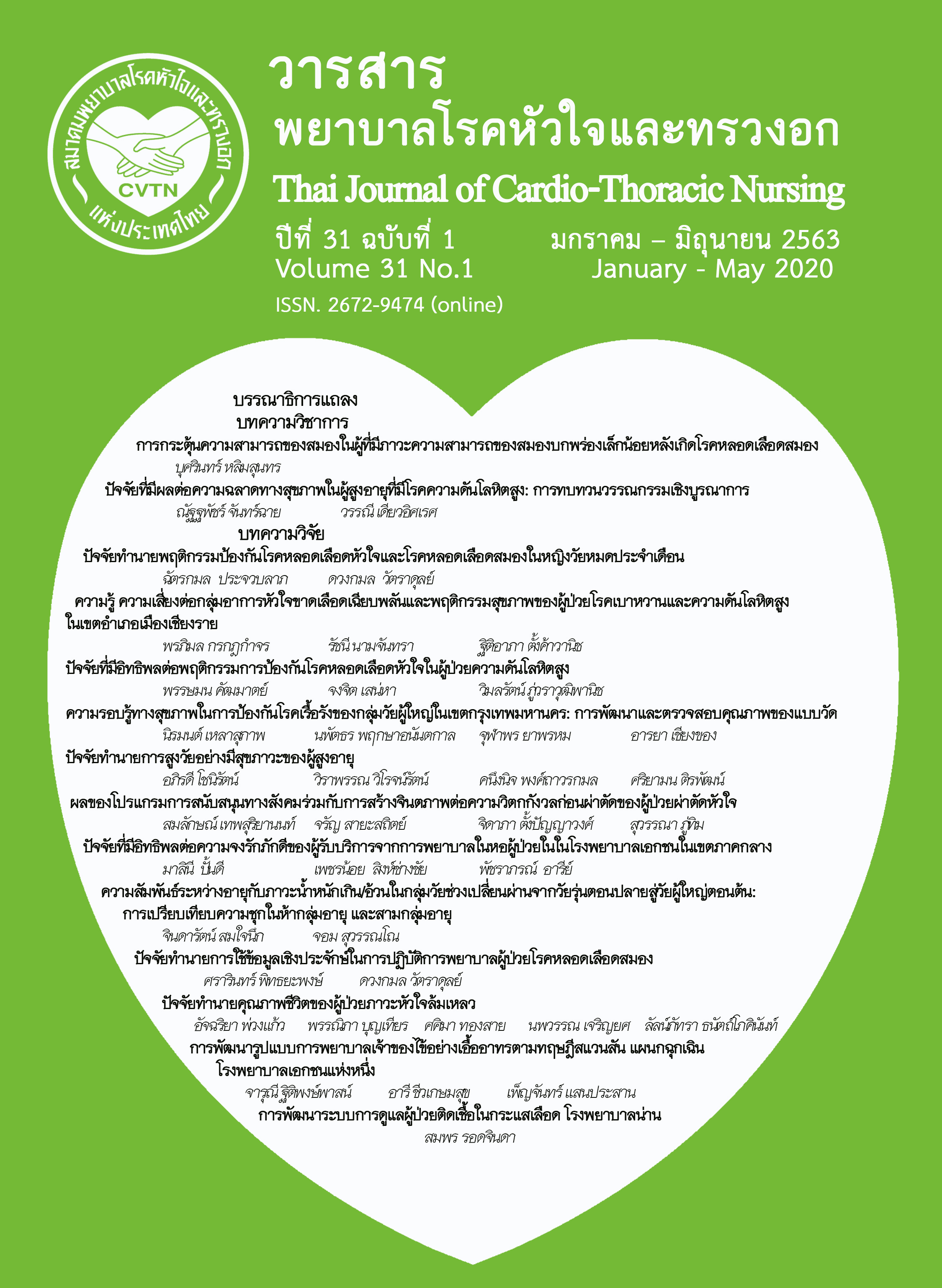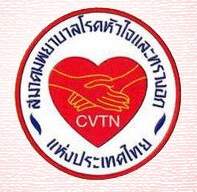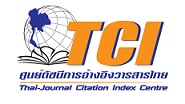Predicting factors of preventive behaviors of coronary heart disease and stroke among menopausal women
Keywords:
body mass index, perceived benefit, preventive behaviors, coronary artery disease and stroke, menopausal womenAbstract
This study was a mixed method research. The purpose of the research was to study the predictability of preventive behaviors for coronary heart disease and stroke among menopausal women, according to the following factors: blood pressure value, plasma glucose level, body mass index, perceived benefits, perceived self-efficacy and perceived barriers.These predicting factors influenced the preventive behaviors for coronary heart disease and stroke among menopausal women. The study was conducted based on the concept of Pender's health promotion model (2002). The 100 samples using health service at a tertiary hospital were selected based on the inclusion criteria. The data were collected via questionnaires which included personal information, preventive behaviors for coronary heart disease and stroke, perceived benefits, perceived self-efficacy, perceived barriers, and In-depth interview related to behaviors of preventing coronary heart disease and stroke.The quantitative data analysis was done by descriptive statistics and multiple regression.The qualitative data was done by content analysis.
The results of the study revealed that most samples (74.0 percent) had a high level of perceived benefits of preventive behaviors for coronary heart disease and stroke. Overall, the factors of perceived self-efficacy (β = .58, p < .001) and body mass index (β = -1.57, p < .05) could be explained the variation of preventive behaviors for coronary heart disease and stroke among menopausal women by 35.8 percent (R2 =.358) with statistical significance (p < .001). The qualitative data analysis found that barriers of preventive behaviors for coronary heart disease and stroke among the samples included a lack of perception that they were at high risk of these diseases, as well as the lack of motivation to perform appropriate self-care.
The research results can be used as a guide to nursing care by creating more effective strategies of preventing for coronary heart disease and stroke among menopausal women.
References
2. Department of Disease Control. Save a life - know the warning signs of stroke [Internet]. 2018 [cited 20 Aug 18]. Available from: http://www.thaincd.com/document/file/info/non-communicable-disease/ (in Thai).
3. Wattradul D, Jamsomboon K, Sanprasan P, Suthipong N, Taechaveerakorn N, Prousoontorn M. Factors influencing to knowledge management of cardiovascular nursing in registered nurses. Thai Journal of Cardio-Thoracic Nursing. 2016;27(2):85-99. (in Thai).
4. Lattiwongsakorn W, Piyamongkol W. Menopause. in: Techatraisak K, Tanmahasamut P, Indhavivadhana S, Wongwananuruk T, Editor. 2017 Essential menopause.Bangkok: Association of Menopause Society; 2017. p. 13. (in Thai).
5. Pender NJ, Murdaugh CL, Parsons MA. Health promotion in nursing practice. 5th ed. Upper Saddle River, NJ: Pearson; 2006.
6. Blood Pressure Association of Thailand. Guidelines for the treatment of hypertension. In: General Practice 2012 (Revised 2015). Bangkok: Blood Pressure Association of Thailand; 2015. (in Thai).
7. Nilnate N, Jirapornkul C, Maneenin N. Factors associated with stroke in hypertensive patients, Buengkan province. Journal of Health Education. 2018;41(1):62-75. (in Thai).
8. Sanpaung S. Perceived benefits perceived barriers nutritional behaviors elderly with diabetes mellitus [Internet]. 2010 [cited 20 Aug 18]. Available from: http://www.tnrr.in.th/ ?page=result_ search&record_id=308025 (in Thai).
9. Sutthipatthanangkoon C, Thato R. Factors predicting preventive behaviors for coronary artery disease among autonomous university staff in Bangkok. Thai Journal of Cardio-Thoracic Nursing. 2017;28(2):111-25. (in Thai).
10. Srisailuan O, Wattradul D. Relationships between Selected Factors and Health Promotion Behaviors of Postoperative Heart Surgery Patients.Thai Journal of Cardio-Thoracic Nursing. 2012;23(2): 17-29. (in Thai).
11. Thimoonnee M, Preechawong S. Factors related to preventive behaviors for cardiovascular disease in premenopausal cleaning personnel.Kuakarun Journal of Nursing. 2016;23(1):118-130. (in Thai).
12. G-power [Internet]. 2018 [cited 20 Aug 18]. Available from: https://download.cnet.com/G-Power/ 3000-2054_4-10647044.html
13. Clinical practice guideline for Diabetes [Internet]. 2017 [cited 24 May 20]. Available from: https:// www.dmthai.org/attachments/article/443/guideline-diabetes-care-2017.pdf (in Thai).
14. Premsuk W, Thato R, Polsook R. Factors predicting preventive behaviors for coronary artery disease among middle-aged men in Bangkok Metropolitan. Kuakarun Journal of Nursing. 2019;26(1):24-39. (in Thai).
15. Chirotkun P. Concepts, theories on health promotion and their application. Nonthaburi: Welfare Program Praboromarajchanok Institute; 2013. (in Thai).
16. Polsook R. Exercise prescription for coronary artery disease. Journal of the Police Nurses. 2016; 8(1):195-6. (in Thai).
17. Buatee S, Siriwatanamethanon J, Sindhu S. Cardiovascular prevention behaviors among middle-aged women living in Banladsrabua Yangtalad District, Kalasin Province, Thailand. Journal of Nursing Science. 2012;30(2):58-69. (in Thai).
18. Funglada W. Health risk assessment of cardiovascular disease and intention to change behaviors among personnel in a private hospital in Bangkok [Thesis]. Bangkok: Mahidol University; 2010. (in Thai).
19. Suttisrisin C. Factors effecting to disease prevention behaviors in risk group for stoke at Chaloem Phra Kiat Hospital, Nakhon Ratchasima Province. The office of Disease Prevention and Control 9th Nakhon ratchasima Journal. 2019;25(1):5-15. (in Thai).
20. Punset K, Klinthuesin S, Kingkaew A, Wongmaneeroj W. Cardiovascular risk among staffs working at The Central of Ministry of Public Health using risk assessment of Rama-Egat heart score. The Ministry of Public Health clinic, Rajavithi hospital, Department of Medical Services. 2013;23(2):57-70. (in Thai).
21. He L, Tang X, Li N, Wu YQ, Wang JW, Li JR, et al. Menopause with cardiovascular disease and its risk factors among rural Chinese women in Beijing: a population-based study. Maturitas. 2012;72(2): 132-8. doi:10.1016/j.maturitas. 2012.02.013
22. Strazzullo P, D'Elia L, Cairella G, Garbagnati F, Cappuccio FP, Scalfi L. Excess body weight and incidence of stroke: meta-analysis of prospective studies with 2 million participants. Stroke. 2010; 41(5):e418-26.
23. Pancharean S. Factors influencing health promoting behaviors of menopausal Women in Sawanpracharak Nakhonsawan Hospital Nakhonsawan Province. Thai Journal of Nursing Council. 2009;24(2):78-87. (in Thai).
24. Booth J, Connelly L, Lawrence M, Chalmers C, Joice S, Becker C, et, al. Evidence of perceived psychosocial stress as a risk factor for stroke in adults: a meta- analysis. BMC Neurol. 2015; 15:233. doi:10.1186/s12883-015-0456-4BMC
25. Saeko U, Jitpanya C. A Study of Stroke awareness among patients at risk of Stroke in Bangkok Metropolitan. Princess of Naradhiwas University Journal of Humanities and Social Sciences. 2014;6(2):13-23. (in Thai).
26. Centers for Disease Control and Prevention. Division for heart disease and Stroke prevention. [Internet]. 2010 [cited 20 Aug 18]. Available from: https://www.cdc.gov/chronic disease/pdf/aag/dhdsp-H.pdf
Downloads
Published
How to Cite
Issue
Section
License
บทความนี้ยังไม่เคยตีพิมพ์หรืออยู่ในระหว่างส่งไปตีพิมพ์ในวารสารอื่น ๆ มาก่อน และกองบรรณาธิการขอสงวนสิทธิ์ในการตรวจทาน และแก้ไขต้นฉบับตามเกณฑ์ของวารสาร ในกรณีที่เรื่องของท่านได้ได้รับการตีพิมพ์ในวารสารฉบับนี้ถือว่าเป็น ลิขสิทธิ์ของวารสารพยาบาลโรคหัวใจและทรวงอก





